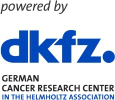Speaker
Description
Background: Our study explored the pathway from nutrition literacy through diets up to nutritional status and hemoglobin levels of adolescents and youth in SSA.
Methods: The study used data from the ARISE-NUTRINT cohort, which was collected in 2024. A total of 9019 participants aged 10 – 24 years were recruited from seven SSA countries. Principal component analysis was used to identify dietary patterns (Dietary Pattern Scores, DPS). These were related to 22 nutrition literacy indicators to obtain a nutrition literacy pattern score (NLPS) through reduced rank regression (RRR).
Results: Underweight, overweight/obese, and anemia were seen in 20.9%, 11.7%, and 14.7%, respectively. Three main dietary patterns, namely western-based, vegan-based, and fish and grains-based diets, were identified. The RRR-derived NLPS explained 6.7% of the total variance in these DPS. The NLPS was characterized by a positive correlation of knowledge of the food pyramid and balanced diet, utilization of the internet for nutrition-related information, engagement in discussions about diet, modification of eating habits based on acquired information, frequent reading of materials on balanced diets, readiness to improve dietary habits, and efforts to influence others to adopt healthy eating practices. A 1-point increase in NLPS was associated with an increase of 0.02 g/dL (95% CI: 0.01, 0.04) in hemoglobin levels. Compared to the lowest score of NLPS (Tertile 1, T1), the highest NLPS (T3) was associated with a 0.13 g/dL increase in hemoglobin. Compared to individuals with normal weight, those with the highest NLPS score (T3) exhibited 1.21 times higher odds (95% CI: 1.00, 1.46) of being overweight/obese. This association was similarly observed with a 1-point increase in NLPS (OR=1.03, 95% CI: 1.00, 1.07).
Conclusion: Nutrition literacy was associated with dietary patterns in this population. Higher nutrition literacy was associated with an increase in hemoglobin levels and overweight/obesity among adolescents and youth in SSA.
| Research type | Other |
|---|

